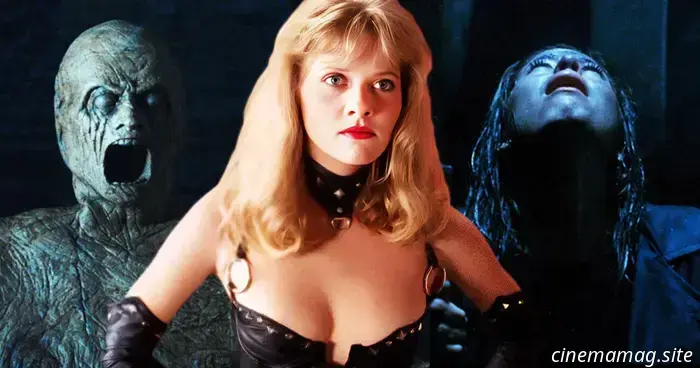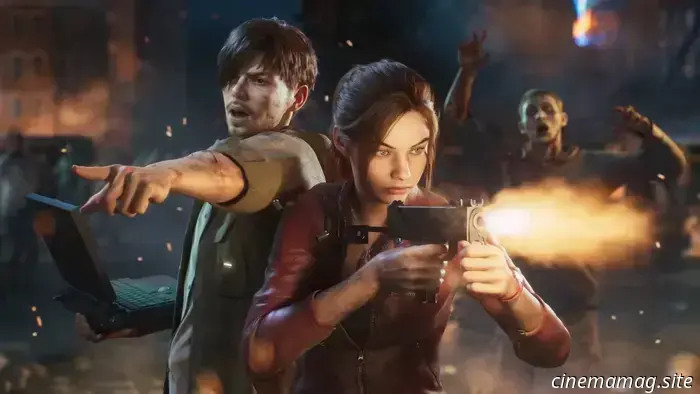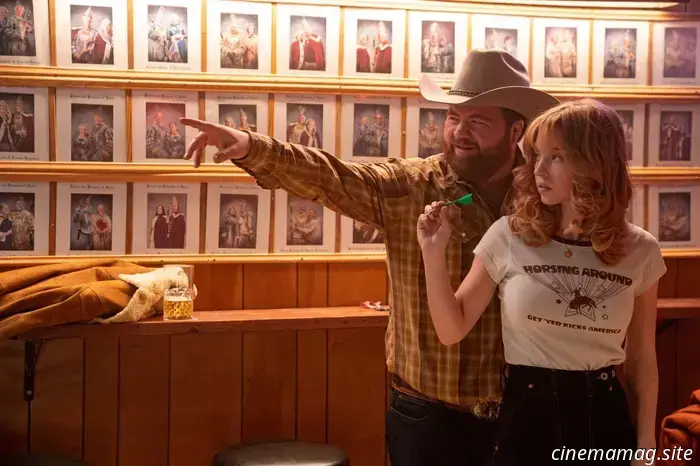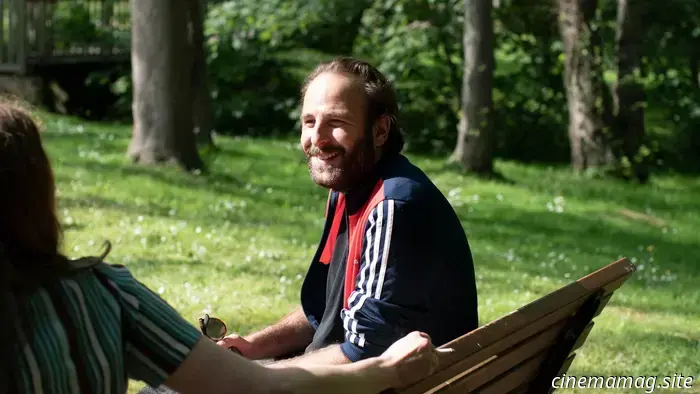
10 Excellent Horror Films That Steer Clear of the Director's Second Film Pitfall
Casey Chong examines ten directors known for their impressive second horror films…
Every filmmaker aspires to achieve success with their initial project, and many do manage to captivate both critics and audiences with their first directorial efforts. The next hurdle, however, is maintaining that momentum without succumbing to the dreaded sophomore slump. In this piece, we highlight ten directors recognized for their contributions to the horror genre, including Wes Craven, Jordan Peele, and Robert Eggers, focusing on their second films.
**Wes Craven – The Hills Have Eyes (1977)**
Similar to the tough-to-watch Last House on the Left because of its graphic portrayal of violence and sexual depravity, Wes Craven’s second film is not for the faint of heart. The Hills Have Eyes delivers an uncomfortably tense and provocative horror experience, boldly addressing its grim depiction of cannibalism through a mutant, hillbilly family that terrorizes a vacationing American family. The film draws parallels to Sam Peckinpah’s controversial 1971 classic Straw Dogs, particularly regarding the lengths an ordinary family might go to for survival.
Craven conveys a message through The Hills Have Eyes, highlighting the class divide between the privileged middle-class family and the marginalized cannibal clan, who are in fact victims of government nuclear testing in the desert. This film led to a lesser sequel in 1985, followed by Alexandre Aja's surprisingly effective 2006 remake that improved on the original in several significant ways.
**Stuart Gordon – From Beyond (1986)**
Just a year after making his memorable directorial debut with the dark horror-comedy Re-Animator, Stuart Gordon teamed up again with Jeffrey Combs for From Beyond. Co-written by Dennis Paoli, who also helped with Re-Animator, the film presents a straightforward yet wildly entertaining premise: a machine called the Resonator enables those nearby to perceive or even experience realms beyond ordinary reality. Combs shines as one of the scientists, delivering a gradually unhinged performance as he falls victim to the Resonator’s body horror effects, culminating in a scene where he devours human brains in a hospital and bizarrely experiences a phallic stalk emerging from his forehead.
From Beyond also dives deep into themes of sexual perversion, notably with Dr. Pretorius reappearing as a massive, mutated blob pursuing carnal pleasure. Gordon does not shy away from excessive gore and violence, while the special effects team goes all out in creating outlandish creatures, from floating eel-like beings to the brain-feasting Pretorius. It’s quintessential B-movie horror, embodying the twisted vision of Stuart Gordon.
**Clive Barker – Nightbreed (1990)**
Clive Barker introduced audiences to the iconic Pinhead in the grisly 1987 film Hellraiser but faced challenges with his sophomore feature, Nightbreed. The film suffered significantly due to studio interference, leading to a poorly constructed theatrical version. Nearly 25 years later, Barker finally had the opportunity to release his original vision. The director's cut extends the film by 20 minutes and includes approximately 45 minutes of new footage, resulting in a more coherent narrative that provides better insight into the characters' motivations.
Drawing from his 1988 novella Cabal, Barker effectively merges dark fantasy, creature features, and violent horror with elements of serial-killer tropes, evident in the sinister Dr. Philip K. Decker, portrayed chillingly by David Cronenberg. His unsettling presence, alongside the concealed underworld of Midian filled with bizarre creatures, serves as a highlight of Nightbreed. The film also showcases extensive makeup effects and ample gore, all while Barker weaves in subtle social commentary on xenophobia and prejudice against outsiders, represented by the idyllic yet misunderstood Nightbreed community.
**Mick Garris – Sleepwalkers (1992)**
Renowned author Stephen King wrote his first original screenplay for Sleepwalkers, and Mick Garris, who previously directed the cult classic Critters 2: The Main Course, took the helm. The collaboration seemed intriguing, but critics widely panned the film, which only managed to recoup its $15 million budget with a modest $30.5 million at the box office.
Sleepwalkers elicits mixed reactions, blending vampirism, creature features, and dark humor that straddles the line between absurdity and depravity. The story follows two shapeshifting humans, known as "sleepwalkers," portrayed by Brian Krause and Alice Krige, who kill mercilessly and sustain themselves by preying on virgin girls. Notably, they share an incestuous bond and have an irrational fear of cats, which can harm a shapeshifter with just a scratch.
Garris embraces its quirky tone without veering into self-parody, effectively mixing grim horror, B-movie elements (like the campy special effects for the shapeshifters), and a touch of humor (“











Other articles
-Movie-Review.jpg) Nobody 2 (2025) - Film Review
Nobody 2, set to release in 2025 and directed by Timo Tjahjanto, features a cast that includes Bob Odenkirk, Connie Nielsen, Christopher Lloyd, John Ortiz, RZA, Sharon Stone, Colin Hanks, Gage Munroe, Paisley Cadorath, Colin Salmon, Jacob Blair, Daniel Bernhardt, Lucius Hoyos, and David MacInnis. SYNOPSIS: Hutch Mansell, a suburban father and an ex-lethal assassin, finds himself drawn back into his dark past after he prevents a […]
Nobody 2 (2025) - Film Review
Nobody 2, set to release in 2025 and directed by Timo Tjahjanto, features a cast that includes Bob Odenkirk, Connie Nielsen, Christopher Lloyd, John Ortiz, RZA, Sharon Stone, Colin Hanks, Gage Munroe, Paisley Cadorath, Colin Salmon, Jacob Blair, Daniel Bernhardt, Lucius Hoyos, and David MacInnis. SYNOPSIS: Hutch Mansell, a suburban father and an ex-lethal assassin, finds himself drawn back into his dark past after he prevents a […]
 Resident Evil Survival Unit releases a new cinematic trailer.
A fresh cinematic trailer has been unveiled for Resident Evil Survival Unit, just before the game's debut on Google Play and the App Store. Created by Quebico, the studio responsible for the complete 3DCG animation Resident Evil: Death Island, this new trailer encapsulates the suspense that players can expect when the game is released later this year. […]
Resident Evil Survival Unit releases a new cinematic trailer.
A fresh cinematic trailer has been unveiled for Resident Evil Survival Unit, just before the game's debut on Google Play and the App Store. Created by Quebico, the studio responsible for the complete 3DCG animation Resident Evil: Death Island, this new trailer encapsulates the suspense that players can expect when the game is released later this year. […]
 Americana Review: A Tribute Album Featuring B-Movie Classics
Note: This review was initially published as part of our 2023 SXSW coverage. Americana will hit theaters on August 15. Watching a talented band perform cover songs can often be enjoyable. Tony Tost’s Americana embodies this idea: it serves as a tribute to the drive-in B-movie, which has subsequently inspired filmmakers such as Quentin Tarantino, who in turn
Americana Review: A Tribute Album Featuring B-Movie Classics
Note: This review was initially published as part of our 2023 SXSW coverage. Americana will hit theaters on August 15. Watching a talented band perform cover songs can often be enjoyable. Tony Tost’s Americana embodies this idea: it serves as a tribute to the drive-in B-movie, which has subsequently inspired filmmakers such as Quentin Tarantino, who in turn
 New trailer for Relay featuring Riz Ahmed and Lily James
With only a week remaining until the premiere of Relay, a trailer inspired by the 70s has surfaced online for the new thriller directed by David Mackenzie (Hell or High Water). The story centers on Ash (Riz Ahmed), a fixer who facilitates payoffs between corrupt organizations and the people who pose a threat to them, as he decides to make a change…
New trailer for Relay featuring Riz Ahmed and Lily James
With only a week remaining until the premiere of Relay, a trailer inspired by the 70s has surfaced online for the new thriller directed by David Mackenzie (Hell or High Water). The story centers on Ash (Riz Ahmed), a fixer who facilitates payoffs between corrupt organizations and the people who pose a threat to them, as he decides to make a change…
 Locarno Review: Mektoub, My Love: Canto Due Wraps Up Abdellatif Kechiche’s Captivating Series
What is Mektoub, My Love about? Even eight years after the premiere of the first film—and following more than eight hours of Abdellatif Kechiche’s grand work—it's a pertinent question to consider. The most recent installment, Canto Due, completes the trilogy with all the familiar elements we've come to anticipate from the series: there are attractive young individuals, servings of couscous, and moments of shaking.
Locarno Review: Mektoub, My Love: Canto Due Wraps Up Abdellatif Kechiche’s Captivating Series
What is Mektoub, My Love about? Even eight years after the premiere of the first film—and following more than eight hours of Abdellatif Kechiche’s grand work—it's a pertinent question to consider. The most recent installment, Canto Due, completes the trilogy with all the familiar elements we've come to anticipate from the series: there are attractive young individuals, servings of couscous, and moments of shaking.
 Suspended Time Review: Oliver Assayas Merges Interests and Personal Experience in Lighthearted Comedy
Note: This review was initially published as part of our 2024 Berlinale coverage. Suspended Time will premiere in theaters on August 15. The memes serve as a reminder that 2019 is already five years past. It was also the year when Olivier Assayas' Wasp Network was released—a peculiar return to the territory of his TV series, Carlos, and afterwards.
Suspended Time Review: Oliver Assayas Merges Interests and Personal Experience in Lighthearted Comedy
Note: This review was initially published as part of our 2024 Berlinale coverage. Suspended Time will premiere in theaters on August 15. The memes serve as a reminder that 2019 is already five years past. It was also the year when Olivier Assayas' Wasp Network was released—a peculiar return to the territory of his TV series, Carlos, and afterwards.
10 Excellent Horror Films That Steer Clear of the Director's Second Film Pitfall
Casey Chong examines ten directors known for their outstanding second horror films. Every filmmaker aspires to achieve success right from the start, and numerous individuals succeed in captivating critics and audiences alike with their debut. The subsequent test lies in maintaining that success without succumbing to the […]
